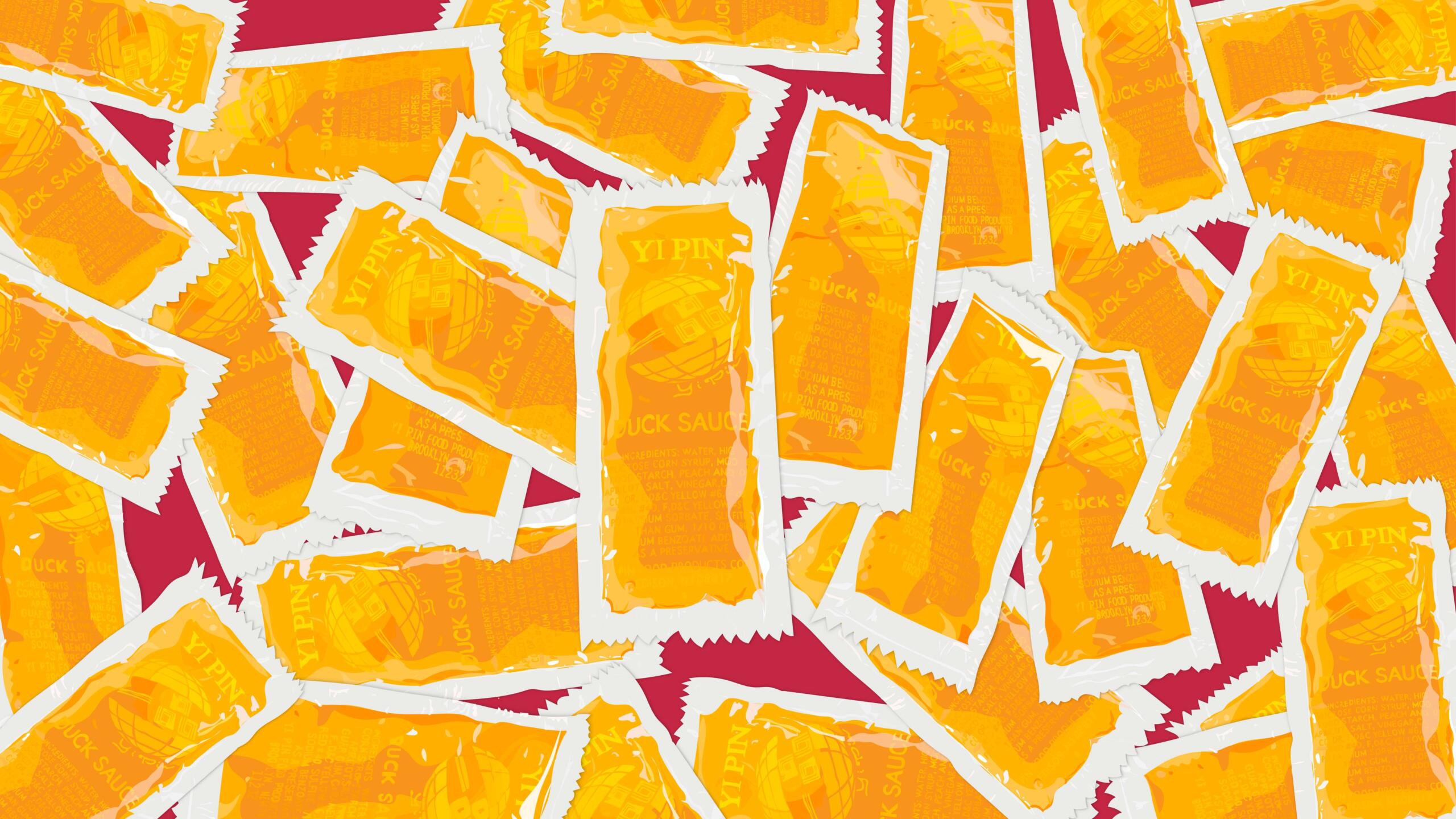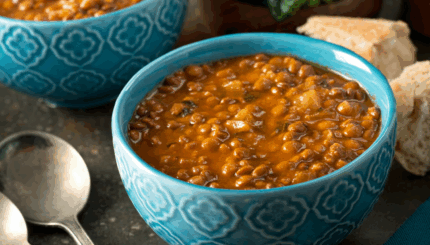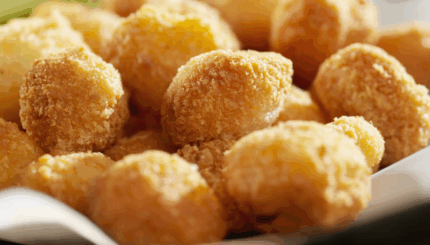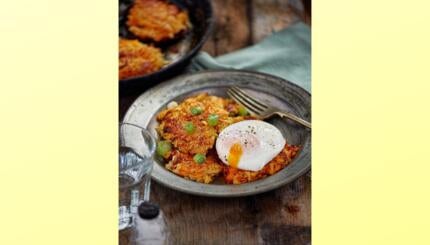If you call your local Chinese takeout spot for a weekly order of fried rice and General Tso’s chicken, you’ve probably got a handful of packets of duck sauce stowed away in the junk drawer next to the chopsticks and soy sauce. Though duck sauce is a relatively recent culinary innovation, the exact origins of the syrupy orange condiment meant for fried foods are unclear, but its path to ubiquity closely follows the evolution of the relationship between Jews and Chinese food.
The Jewish affinity for Chinese food, especially on Christmas Day, is well established and often joked about, as in the classic, ‘The Jewish people are 5,000 years old. And the Chinese people are 3,000 years old. So what did the Jews eat for 2,000 years?’ References to Jewish families “eating Chinese” have been a pop culture trope from Sid Caesar’s stand-up to SNL.
But the connection is more than a punchline. In the 1930s, Jewish immigrants living in the Lower East Side of Manhattan were in close proximity to Chinatown and, unlike Italians, who also populated the area, the restaurants owned by Chinese immigrants featured no Christian iconography and remained open on Sunday, two inviting factors to Jews who were increasingly interested in assimilating as Americans by partaking in American customs, i.e., eating in restaurants. By 1903, The Jewish Daily Forward had coined a new Yiddishism to describe the act: oyesessen. Jews partaking in it tended to be at delis or Chinese restaurants.
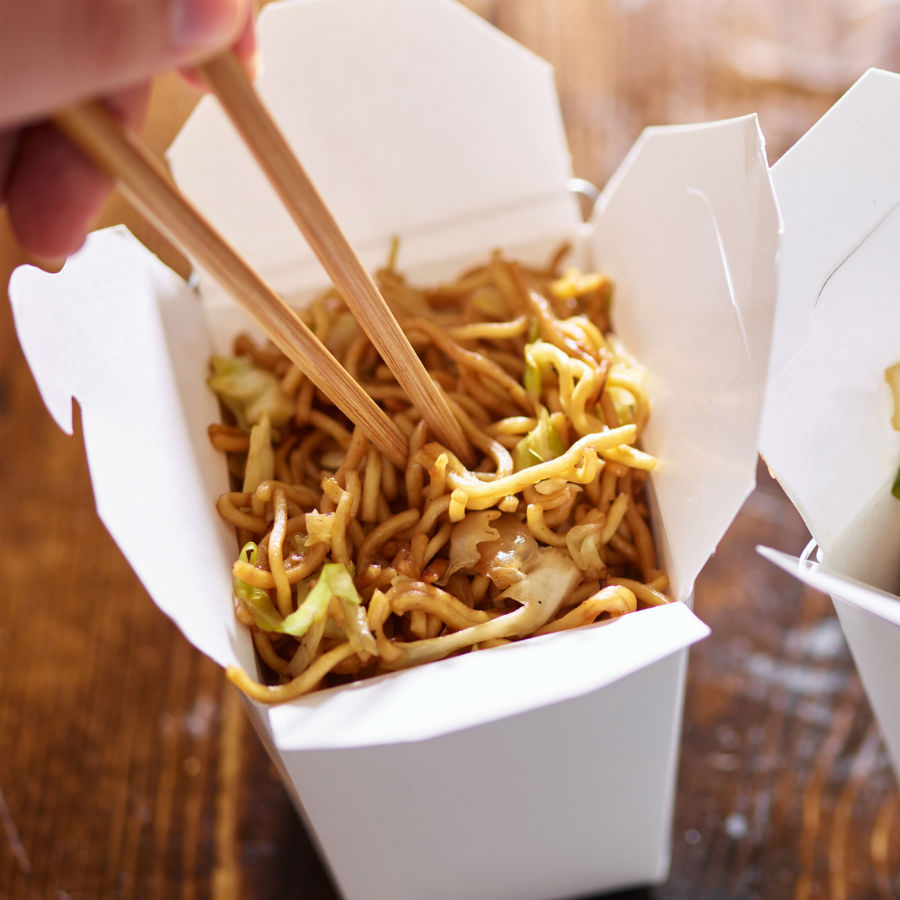
In his book “A Kosher Christmas,” Rabbi Joshua Eli Plaut, PhD, of Metropolitan Synagogue in New York explains:
The Nosher celebrates the traditions and recipes that have brought Jews together for centuries. Donate today to keep The Nosher's stories and recipes accessible to all.
“The very first mention of American Jews eating in a Chinese restaurant dates to 1899, when the American Hebrew journal criticized Jews for eating at non-kosher restaurants. By 1936, a publication called the East Side Chamber News reported at least 18 Chinese tea gardens and chop suey eateries in heavily-populated Jewish neighborhoods. All of these were within close walking distance of Ratner’s, which was then the most famous Jewish dairy restaurant in Manhattan.”
In addition to their geographic proximity, Chinese food also included ingredients like onions, garlic, buckwheat, celery and mushrooms and preparations like dumplings that resembled kreplach, all of which would have felt familiar to an Ashkenazi audience. The lack of dairy also likely made Jewish diners feel more comfortable because they didn’t risk mixing meat and dairy, which is forbidden according to kashrut. But further, as Gaye Tuchman and Harry Levine wrote in a 1992 study ‘‘New York Jews and Chinese Food: The Social Construction of an Ethnic Pattern,” Chinese food also represented a kind of “safe treif,” wherein non-kosher foods like shellfish and pork were chopped, diced and obscured by dumpling skins and wonton wrappers that acted like the proverbial ‘hole in the sheet,’ allowing Jews to knowingly-unknowingly consume their contents.
As Jews were showing their newfound urbanity by “eating Chinese,” duck sauce was just beginning to enter the chat. No single person or restaurant lays claim to inventing the sauce. Rather, duck sauce is likely an amalgamation of several sauces, including hoisin, which was traditionally served with Peking duck, and the more authentically Chinese plum sauce, which is also intended to accompany duck, as well as the French bigarade sauce, made of seville oranges and having originated as a sauce for pressed, fried duck.
There is a reference to duck sauce as early as 1927 in a Boston newspaper article describing a Chinese New Year feast that included, “sauces of soy, sauces of mustard and duck sauce,” i.e., the trinity of sauces in the bottom of your Chinese takeout bag, but it would be another 30 years before the machinery for putting sauces in little plastic packets was invented, and not until the 1970s when it was used for duck sauce specifically.
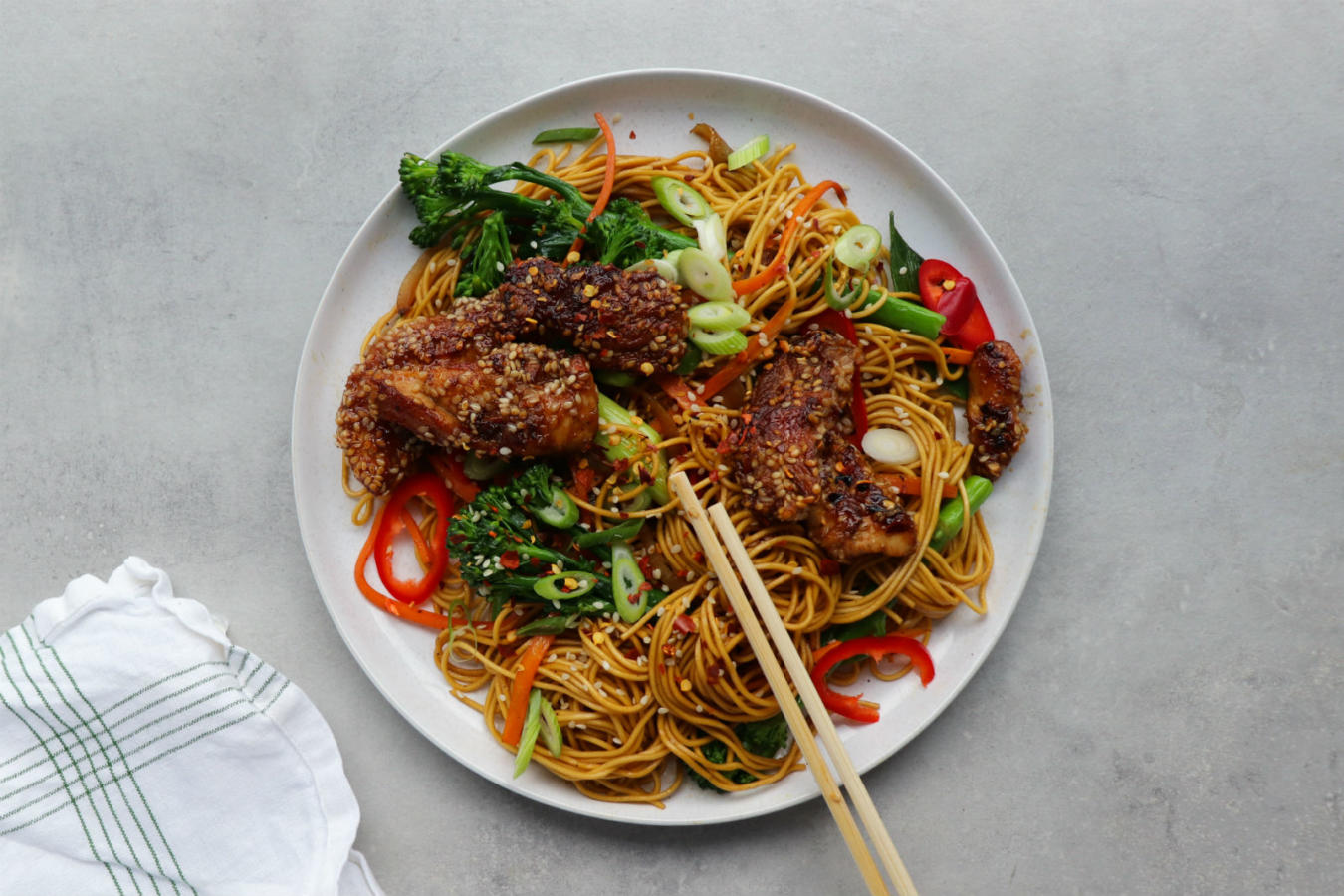
Just as the predilection for Chinese food among American Jews took root around New York and New Jersey, duck sauce is also an East Coast phenomenon, likely due to two factors: First, the West Coast Chinese population was already well established, having immigrated in waves to complete the transcontinental railroad. They brought a more intact version of their cuisine to Chinatowns in California. The East Coast Chinese population, by contrast, migrated across the country as the railroad was completed, and their specific American Chinese cuisine grew out of their location, customer preferences no doubt playing a role.
But also, as Laura Kiniry explains in Smithsonian Magazine, “Perhaps ‘duck sauce’ as a term never made it out west because the main purveyors of duck sauce packets — companies like W.Y Industries and Yi Pin Food Products — are based out of the New Jersey and New York area.”
The tangy sweetness of duck sauce would have felt familiar to Ashkenazim who were accustomed to sweet and sour sauces for brisket, chicken and stuffed cabbage. And the addition of fruit to savory foods is well-cemented in dishes like tzimmes. It also helped that a beloved Jewish-owned brand, the horseradish manufacturer Gold’s, began selling the sauce in the 1960s.
“Duck sauce was one of the items that we took great pride in adding to our line,” remembers Marcus Gold, whose father Morris came up with the idea and the recipe for Gold’s Duck Sauce. “We pushed it to the hilt, selling it to mom-and-pop stores in the period when we first joined the company.” Marc and cousin Neil would leave jars in little bags by the door of homes in the Mill Basin area of Brooklyn to create demand for the relatively new sauce. “We were able to get a few cases into the supermarkets in the area. [It] grew from there, and in many ways, it was similar to the way my father and his brothers sold horseradish at the beginning,” says Gold.
This grassroots marketing likely helped duck sauce catch on in Jewish kitchens. The kosher brand Gefen also sold duck sauce, giving Jewish home cooks two options for prepared kosher duck sauce to tuck away in the pantry. In the Jewish News of Northern California, recipe writer Faith Kramer opines, “If there was one pantry essential to give meals an exotic twist in many Jewish homes when I was growing up it was a jar of Gold’s Cantonese Style Sweet and Sour Duck Sauce.” And popular Jewish recipe blogger Jamie Geller recalls, “Gold’s Duck Sauce is an old friend. My mother always had a jar of it in the fridge when I was growing up.”
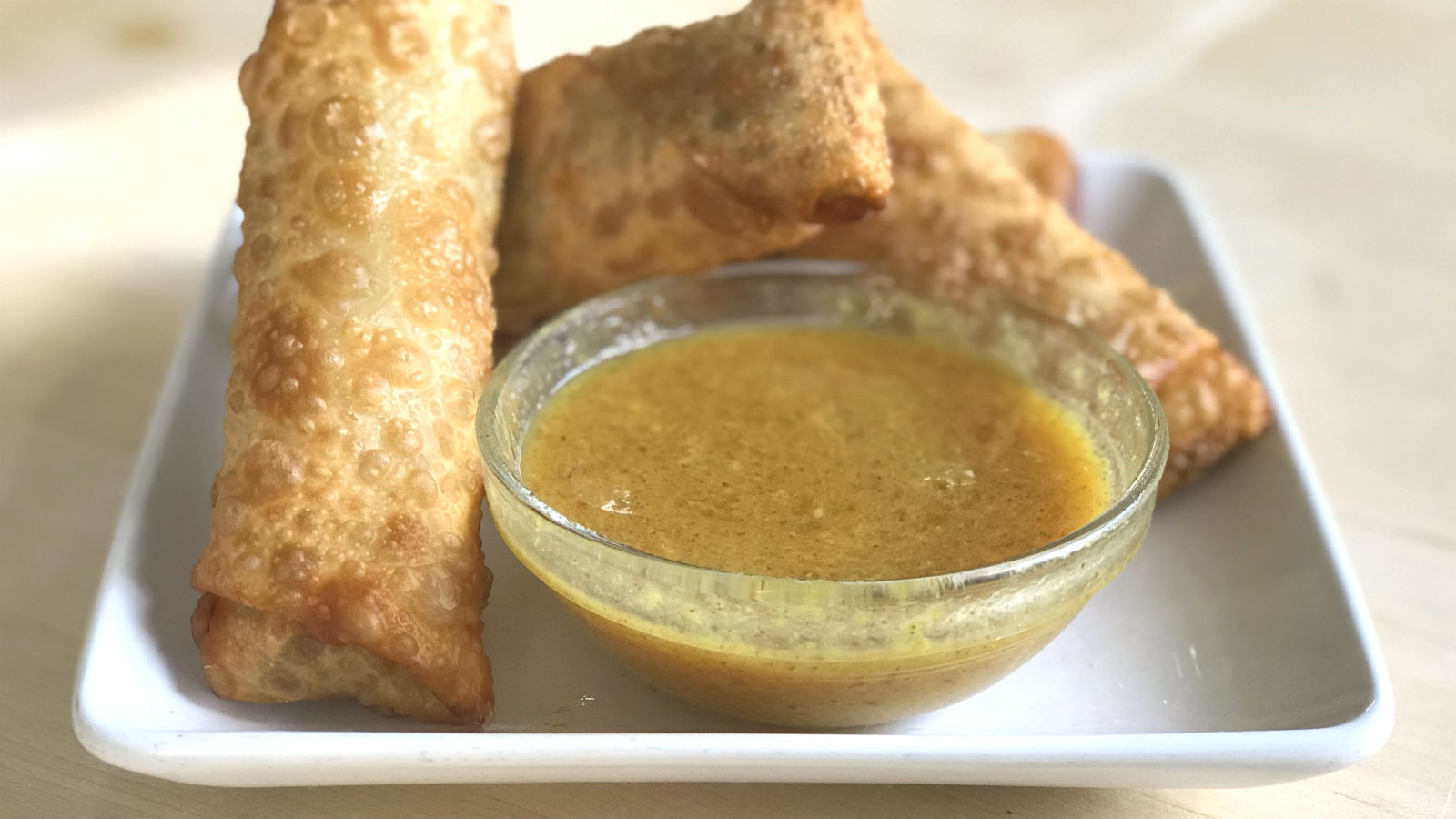
Duck sauce has firmly established its role as a kind of de facto Jewish condiment/ingredient, showing up in recipes for chicken, brisket and meatballs. It’s also an essential ingredient in the controversially beloved treif sandwich Roast Pork on Garlic Bread, which was created by Herbie’s Restaurant in Loch Sheldrake, where it went on to become a staple of the Borscht Belt, which spawned a host of imitators, according to Sam Sifton of The New York Times, in Jewish diners and trendy eateries like Ivan Ramen and Court Street Grocers.
Over the past 30 years, both duck sauce itself and the custom of Jews eating Chinese at Christmas have spread beyond the East Coast, making their way to the West Coast and even across the pond to England, via student rabbis and Chabad, who might have smuggled a packet or two in their carry-ons. Whether you’re opening a paper carton of steamed dumplings or sitting around a lazy Susan loaded with Moo Goo Gai Pan at Christmas, you’ll likely find duck sauce there in all its neon orange, sticky sweetness.
